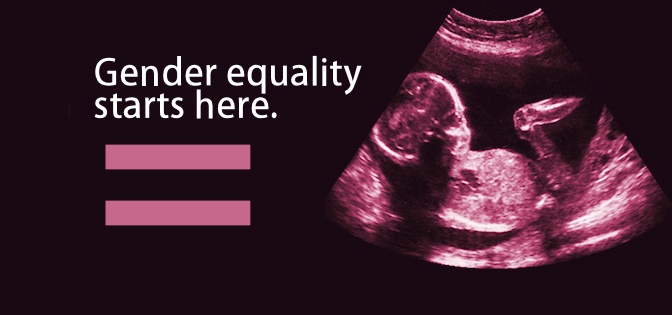“Where’s the closest abortion provider? We don’t need another boy.”
What?!
It may be a surprise to you, your team, and your donors to realize the need to be more intentional in discussing gender determination in the PMC setting. As an ultrasound training company, we have never encouraged gender determination to be a part of the exam when confirming pregnancy. There are the obvious risks, like being wrong about the gender and positioning a new mom to have to redecorate the blue nursery. What a shock to be expecting one gender for 4-5 months, only to see that the opposite is true at birth! Having to return the pink outfits is a burden, but it might be confusing to dress baby Travis in them. I’m sure those pictures would not be ones he’d like shown to his future bride.
Patients are excited to share with others whether they are having a boy or a girl. Misinformation can be costly to an organization.
Having the public become aware that a certain clinic seldom gets the gender right isn’t a good thing.
Having patients requesting gender determination exams doesn’t follow a medically indicated approach to scanning.
Having family members put pressure on parents, who want to be surprised at birth about the gender, can change extended family dynamics and add stress to a young couple.
As an organization, we feel it is important that all sonographers know how to address the “can you tell us the sex of the baby?” question. Let’s do a bit of role playing by listing responses your team can consider for use by those who ask.
Let’s begin with restating the question: “I hear you asking about the sex of the baby. We call that gender determination scanning.”
Responses:
- “While gender determination can be part of some exams, it is never medically indicated. We only do medically indicated exams at our clinic.”
- “Many ask about the gender. How would that information impact you?”
- “Knowing the gender is important to some parents or family. How would knowing the gender impact you or your family?”
- “Many times at the Standard exam, performed at 18-22 weeks gestation, the gender can be determined. Have you chosen a doctor yet?”
- “Remember in your consent disclosure, we discussed that I’d be looking for three important factors in early pregnancy: gestational age, location, and viability.”
- “Is anyone pressuring you about gender? How do you feel about that?”
- “Can you share any gender determination experiences with me that had suboptimal outcomes?”
- “What is the main reason you’re asking about the gender?”
I hope you will take time to consider gender determination more closely. Revisit how your scanning team responds to the current client(s) of your clinic when it comes to this issue and how you can be intentional in promoting gender equality in the womb. If you are in a state that has such legislation, how have you been intentional in incorporating the legislation into your daily routine in patient decision making? Have you incorporated it?
My recommendation is that you should be intentional in utilizing it. It should be part of the message that is used by all team members. If your clinic is not in one of the states that has this legislation, how can you still be intentional in incorporating the ideas behind this legislation in your clinic? It is important to stand on your clinic’s mission and word things in a way that the patient has knowledge and facts that equip her to make informed choices.
How would my day change if I asked routinely if gender is a factor in considering abortion? I won’t know if I don’t ask.
If your team would benefit from a training session on gender selection messaging, call us to build out a program that fits your imaging team as well as those who support them. From your imaging team to those who support you outside your walls, having the knowledge related to gender selection abortion can be empowering. Let’s be intentional in the message we are conveying to our community about gender selection.
Connie Ambrecht
Founder & CEO
Sparrow Solutions Group

You must be logged in to post a comment.